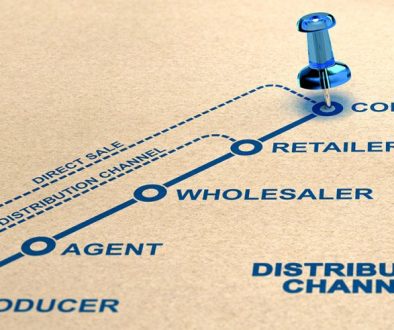How to Price a Product for Retail? First ask ‘What do retailers want?’

How to price a product for retail? First you need to put yourself in the retailer’s shoes. Imagine you are the retailer. What do retailers want? Retailing is a tough environment. Even before COVID-19 hit us, retailers have had to work hard to juggle declining footfall, increased competition from online and increasing costs. However, they hold the key to your consumers, to the people you want to sell to. To get your products to more people, you need retailers. To grow your business, you need to sell your products into more stores.
Getting your retail pricing right is therefore essential. Product pricing that is too low means you will not make enough profit to survive. Product pricing that is too hight means that you may not even get a listing.
Before you dive into the numbers for your pricing strategy you need to discover what your retailers want; what they really need. Your retail pricing strategy should be focussed on what the retailer needs. This article explores 5 key areas you must not ignore.
What do retailers want? To make money
It sounds obvious but retailers need to make money! Every penny is important to them. If they are bricks and mortar retailers this will be even more the case especially as internet shopping now accounts for around 30 per cent of all non-food purchases. 2019 was the worst year for retail since BRC/KPMG’s records began in 1995 and retailers, big and small, are fighting for survival.
Retailers need to cover their overheads. These overheads, which include business rates and wages in line with the national living wage, are not on the decline. Therefore, when planning how to price a product for retail, you need to accept that they will need to make a clear margin. When setting your product pricing strategy, you will need to account for this.
You will need to suggest a retail price for the consumer and then a price that you will sell to the retailer. This price will need to be low enough for the retailer to make their margin but high enough for you to make your margin too. Don’t forget to include VAT and duty in your calculations if they apply to your product.
It is not just the margin they make on one item though. They need to know that your product will sell. If you would like your product to replace a product that is already stocked, then you need to show that your product can either have a higher rate of sale or higher margin, or ideally both!
What do retailers want? People in their stores
Retail is highly competitive and increased footfall, or more people in store will always be an aim of any retailer. This applies to both online and especially bricks and mortar sites. There is an increasing focus on customer experience to encourage people into retail outlets. Experience is helping to get people into stores. Any part you can play in this will be welcomed by the retailer.
Your product and your retail pricing must match what the shoppers are looking for. Whether it is giving better value, giving access to the latest trends or technology, or something else that the shopper is looking for, let your retailer know what you can bring. Let them know how your product will increase footfall and get new customers into their shops. The more relevant your product is, the more the retailer will want it and the more willing they will be to pay for it.
Retailers are known for trying to push down prices. If you cannot afford to lower your prices (or simply do not want to), try offering other value instead. That value could be in the form of driving customers into the store. You might be able to contribute to advertising, social media or in store activation. Activations instore can include sampling, demonstrations, competitions, and the like. Anything that will encourage more people to come to that retailer and buy more of your product is a winning scenario for both of you.
What do retailers want? Loyal and new customers
Once the retailer has the people in their stores, they want those customers to keep coming back, to tell their friends, to encourage more sales. The retailer will have worked hard to establish their brand, what they stand for and the type of customer they attract. You need to show that you understand your target consumer and why and how they are a match to the retailer you are selling to. If you have a premium, high priced product, it would not be a great fit for a discount store and vice versa.
Do your research into the retailer’s customer base – who do they target? What are these consumers’ likes, dislikes, disposable income? What are their habits? Why do they shop where they do? The closer the match to your ideal customer, the more likely you are to get a listing as you will be more aligned to that retailer. Your retail pricing should reflect what their current customers are willing to pay in that store and your product should reflect the quality and values that they are used to. This will show the retailer that you can help them to satisfy their customers and keep them coming back.
Think about how your business and your product can help the retailer. What does your product do to help them gain the loyalty of their customers? Does your product help offer better value? Have stronger green credentials? How to price your product for retail? Your pricing strategy and any support you give to the retailer needs to help them attract and keep customers. It is in both your interests to do so.
Get access to lots more great content by joining our Pricing Learning Hub
All for Free
What do retail buyers want? To meet and exceed targets
There are distinct types of retailers; from small independents to multinational grocers and everything in between. You need to be clear which type of retailer suits your product and which you will be targeting. Unless you are selling to a small independent store, you will be most likely to be selling to the buying team rather than the owner. Find out as much as possible about what the buyers really need.
Buyers are people too, with aims, targets, and jobs to be done. The more aligned your offer is to the buyer’s goals, the easier the sell in will be. Try to find out what the buyer is measured on. Is it revenue? Profit? Margin? Rate of sale? Average basket size? The buyer will appreciate you taking the time to find out what they want and not simply what you want. When working out how to price your product for retail, show how your product and your support package help the buyer get to their goals. Show them how your product can do it better than the current range.
What do retailers want? Integrity
When asked what they want from suppliers, repeatedly retailers ask for improved communication and integrity. When you say you are going to do something, do it. If the deal you offer promises extra support in store, make sure it happens. However, if, in exceptional circumstances, you can’t do something you said you would, let the buyer know as soon as possible. Manage expectations and the relationship the best you can.
It sounds obvious but do not lie just to get the deal. It will leave a bad taste if you get found out and any trust you may have built up will disappear at once.
Real life example
I know of a buyer who experienced this. A supplier came to them with a seasonal product offering. The offer was good, but the buyer was not sure as it was still so early to be buying for the season. The supplier then said that the buyer needed to secure volumes that day as all their competitors had already done so and supply could not be guaranteed. Fearing they would miss out, the buyer agreed to secure the large seasonal volumes. Imagine how that buyer felt when the salesman’s manager called the next day to thank the buyer for being the first big customer to order way in advance of anyone else. They never bought from that supplier again. The trust had been broken.
Your product pricing strategy should be responsible. Retail pricing to maximise value is one thing, profiteering is quite another. It’s never ethically right to increase your prices to make an unreasonable profit on the sale of essential goods, especially during times of emergency. There are rules and standards to ensure fair retail pricing and competition. Make sure that you know what these standards are so that you can operate within competition law.
How to price a product for retail?
Find out what your customers want. Retail businesses are about making their cash work hard, attracting and keeping customers and getting the most out of their suppliers. Find out as much as you can about your target retailer and adapt your retail pricing accordingly. Shape your offer to take the retailer’s need into account, not simply your own. Do your research and make it easy for the buyer to say yes. Therefore, when you ask yourself ‘how to price a product for retail?’ Remember it’s all about the customer. Plan ahead, know what will help them, know what they want and what you can afford to give. Good Luck!
Want to learn more about pricing?
Sign up to our Pricing Learning Hub and get loads of great free additional content to help you get your pricing right.
- Exclusive access to loads of great content
- Tools, articles, podcasts and videos to build your knowledge and confidence
- Help build your profits – all for free
Get access to lots more great content by joining our Pricing Learning Hub.
All for Free



